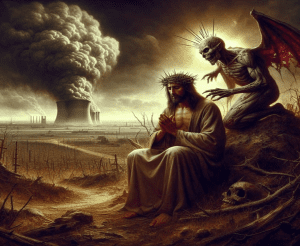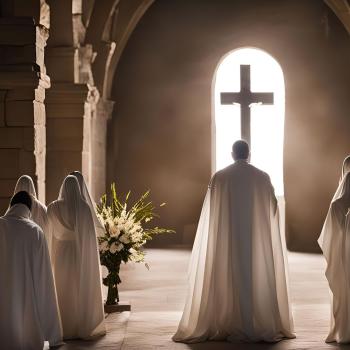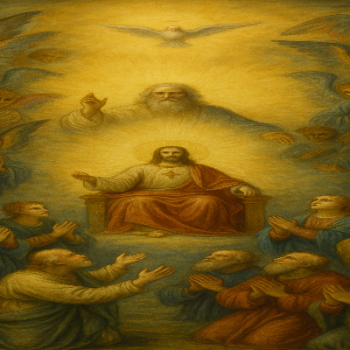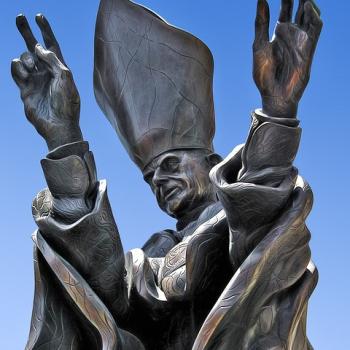
As Catholics, we hear the word sin almost as frequently as we hear our own name. However, our concept of sin is often oversimplified and reduced to only what a person does. In his seminal work Cur Deus Homo? (why the God-man?), Saint Anselm identifies two modalities of sin that will be discussed in this essay.
The first modality – the one most of us think of – is an action contrary to God’s will. Often, sin is seen as a failure in genuine love for God and neighbor caused by a perverse attachment to certain goods. It wounds man’s nature and injures human solidarity (See the Catechism of the Catholic Church).
Because sin can be of differing severity, the Catholic Church distinguishes between venial and deadly sins. Venial sins are acts that, while contrary to God’s will, damage but do not destroy one’s relationship with God. On the other hand, mortal or deadly sins are grave and deliberate acts against the will of God. Mortal sins are so severe that they sunder our relationship with God and place our souls in danger of damnation.
As indicated, this type of sin is a verb, an action done (or not done) that falls within the categories of venial or mortal sins. Can sin be a noun, as well? Can sin be an entity and not just an act? I want to highlight two biblical passages that seem to suggest precisely this.
“We know that the law is spiritual; but I am carnal, sold into slavery to sin. What I do, I do not understand. For I do not do what I want, but I do what I hate. Now, if I do what I do not want, I concur that the law is good. So now it is no longer I who do it, but sin that dwells in me. [Emphasis mine].” (See Romans 7:14-20).
Here, we see references to both “faces” of sin. The verse presents evidence of what the Church refers to as concupiscence, or the subordination of man’s desires to the dictates of reason, and the propensity of human nature to sin as a result of original sin. Because humans possess free will, they are capable of acting contrary to God’s will. Moreover, because the effects of original sin have darkened the intellect, the capacity to recognize the objective good is seriously compromised.
More commonly, concupiscence refers to the spontaneous movement of the will toward whatever the imagination portrays as pleasant and away from whatever it portrays as painful. However, concupiscence also includes such unruly desires as pride, ambition, and envy. (See Hardon, John. Catholic Dictionary. 2013). This we may call the first face of sin. The second face of sin is an entity Saint Paul claims dwells within him.
The second verse I want to examine takes on an even darker, more insidious tone. “For our struggle is not with flesh and blood but with the principalities, with the powers, with the world rulers of this present darkness, with the evil spirits in the heavens.” (Ephesians 6:12). Again, we see sin (evil) as an entity or force. When this verse is taken in conjunction with Romans 6:16, the implication is that sin is not simply the result of choices and actions taken by the individual but a power that acts on or even enslaves human beings.
The belief that sin is not just something we are inclined to do but a force that entraps us provides insight into the salvific work of the Crucifixion of Christ. To understand why, I will return to Ephesians 6:12. Saint Paul notes that for believers, the struggle is not with, or at least not only with, our human frailties. What exactly are these “principalities and powers”?
Principalities and powers generally describe angelic powers, whether good or bad. However, in this context, the verse turns dark with the mention of the rulers and the spiritual wickedness in the heavenly places. Again, the implication is that sin is not just something we do but an entity that causes us to sin even when we are cognizant that we are sinning. This conclusion allows us to understand Saint Paul’s puzzlement more clearly: “What I do, I do not understand. For I do not do what I want, but I do what I hate.”
From what has been said, we ought not to consider ourselves innocent pawns compelled by evil. To do so would deny human free will. Rather, we should see ourselves – difficult as this may be – as complicit with the forces of evil. C.S. Lewis captures this concept. “Fallen man is not simply an imperfect creature who needs improvement; he is a rebel who must lay down his arms.” (Lewis, C. S. Mere Christianity. Zondervan, 2001).
If we see sin as composed of two faces, it provides a point of departure for understanding the Crucifixion. When sin is understood as a personal act that requires atonement, then the Crucifixion of Christ can be seen through the lens of sacrifice, which makes atonement for sins possible. This can be best understood in the satisfaction theory of atonement.
The second face of sin requires us to recognize it as a power that must be destroyed. Understood this way, the Crucifixion becomes the manner in which God defeats the power of sin and death. This view of sin and the Crucifixion is best understood as the Christus Victor theory of atonement.
In this exposition, I have sought to show the two faces of sin. The first – the one we most commonly associate with the word – is an intentional and knowing act against the will of God. The second “face” of sin suggests that sin is a power under which we live; a power we struggle with in a fallen world.
I close with a quote from Flannery O’Connor’s book “Wise Blood.” “If I was in sin, I was in it before I ever committed any.”
















